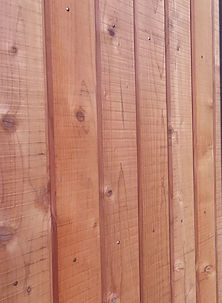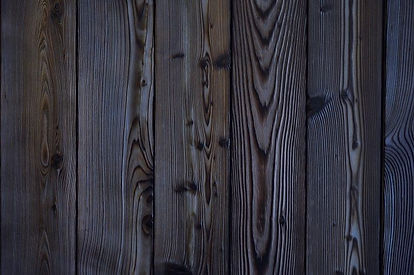 |  |  |
|---|---|---|
 |  |
PROFILES OF TIMBER CLADDING
Weatherboard is the term that covers many different profile styles but traditionally it is style of cladding going back to the early days of the New Zealand It is still in use today because of its appearance and durability. Weatherboard profiles have changed dramatically to meet todays needs and tastes. In this page we want to cover a few of the many options available for your home.
Below are some examples of profiles that you can have, however the list of options is endless, so we encourage you to call and discuss your needs.
Traditional Weatherboard Timber cladding
Timber weatherboards are a simple and strong cladding, created by sawing a timber board lengthwise in a slight pie-shape. This creates a narrow edge on one side of the length of the timber weatherboard, and a wide edge on the other side. The builder will overlap the timber boards, starting with the first timber board placed at the bottom of the wall. This overlapping is where the weather proofing coming from. This type of timber cladding sheds water quite well, as there are no edges that will hold and absorb moisture and it allows for air flow to dry the cladding easily.
Traditionally your builder would make the decision regarding how much to overlap the timber boards although now days its usually specified. The exception to this is bevel back timber cladding that has grooves inset. This predetermines the amount of exposure left. The more overlap there is the sturdier the structure will be. The average exposure is 100 - 200mm. Smaller exposure area has a more expensive look.
Timber weatherboard and all timber cladding must be maintained with periodic staining or painting. With lower grade timbers like pine Caulking will be necessary to improve weather tightness due to the cupping and movement in the timber.
Bevel Back timber Weatherboards
Bevel Back timber weatherboards are the most popular of timber weatherboards. The profile is designed allow good air circulation and is also very good at directing water away from the building. The profile design angles away from the wall and throws sharp attractive shadow lines.
Bevel back timber weather boards get the name from a slight bevelled or angled cut to the rear section of the board. The bevel allows the board to jut out from the build and not only creates a profile that deflects rain but also improves the air gap allows greater airflow.
Shiplap Timber Weatherboards
Shiplap timber cladding is by far the most popular style today. Shiplap is a highly attractive option and versatile in that it is installed vertically but you can use random width boards as a point of interest. This type of timber cladding is a popular choice for designer homes.
One long edge of a board is milled down to be significantly narrower than the rest of the timber board On the other long edge, a small step is cut on the bottom of the timber board. This creates a overlap that shows the sculpturing of the timber board without creating a ledge on which water can bead.
One of the benefits of Shiplap timber cladding is that it gives wood plenty of room to expand and contract without compromising the structure. The partial lapping and bevelled edge create an interesting shadow line.
Bandsaw tight knot Redwood is often milled into Shiplap timber cladding and valued for its rustic appearance. Shiplap timber cladding can be special ordered in prefinished grades of whichever is desired. It requires the same maintenance of any other TIMBER CLADDING , with periodic washing, and painting or sealing.
Rusticated Weatherboard
Rusticated horizontal Redwood weatherboards are a derivative of the bevel back weatherboard with a shiplap. Rusticated Weatherboards have a distinctive scalloped rebate which is designed for a pleasing look and also tp promote water to fall off. Rusticated weatherboards are the classic look which delivers reliable trusted performance.
Reminiscent of rural buildings, and originally used for exterior cladding of barns, sheds and farm buildings, this Redwood profile is renowned for its strength and robustness.
The profiled finish of rusticated weatherboards also accentuates the attractive natural features present in Redwood, showcasing the beauty of this timber as a cladding material. Modern machining methods have enabled Redwood timber suppliers to develop innovative new horizontal architectural profiles with a variety of lap and rebate detailing, providing a range of finished weatherboard alternatives to suit almost any application.
For this reason rusticated weatherboarding has come of age and is no longer simply the preferred choice for cladding of rural buildings. This weatherboard type can be seen throughout the country, frequently featured as top end house cladding in award-winning architecture.
Board and Batten Weather Boards
Another historic style of covering the outside or inside of a house is with timber board -and-batten timber cladding. This has been most frequently used in completing barns and other farm buildings. The timber cladding is installed vertically, and consists of wide timber board s that are spaced evenly, with a batten nailed over the space. The batten is a narrow strip of wood.
This manner of installation allows for more expansion and contraction of the planks. It is thought that this method of construction was developed in order to allow farmers to hang timber cladding with unseasoned wood.
One popular application of timber board -and-batten timber cladding is to use varying widths of timber board and batten to create different patterns.
Shake Timber cladding
Shakes look like shingles, but they are much thicker and more durable. The bolts, or wooden blocks, from which they are cut, are sometimes hand-sawn. The shakes are not uniform in thickness, which is part of the appeal of shake timber cladding.
They are attached to the sheathing, starting at the bottom of the wall. Each layer laps the previous one. Shake timber cladding is mostly available in redwood and Redwood. It has a rustic, coarse look.
It is important to check building codes in your area before you install shake timber cladding or Redwood shake shingles. Some building codes prohibit these products, citing the fire hazard of that much rough-finished wood. Shake timber cladding should be treated with fire-retardant chemicals and maintained to keep them from splitting or hosting insects.
Shingle Timber cladding
Wood shingles are popular for timber cladding applications because of the smoothness and consistency. They are fairly easy to install, and preferred for oddly shaped walls such as turrets. They can be stained or painted, and are often painted in bright or historic colors when used on Victorian style homes.
Shingle timber cladding can be made from any of the woods used for other types of timber cladding. As with the shake timber cladding, check with local building codes.
Timber Weatherboard Finishes.
There really is only 3 options to choose from - Smooth Face, Band Sawn Face or Black Burnt.
Machined smooth timber weather boards look stunning. This option really highlights the wood grain and colour. The timber holds its pristine look and feel for longer and doesnt hold cobwebs making maintance easier.
Band Sawn face is very popular and really adds a true rustic look to the timber. It also takes on more stain which improves the life span of the timber. If your looking at a tight knot grade this can be a great option for giving some uniformity to the face on the board.
Shou sugi ban (焼杉板) come from Japan in the 18th century primarily as way to treat weatherboards improving its weatherproof characteristics and durability. The way its done is to simply burn the face of the boards which involves charring a wood surface to around 3mm of charred face rendeing the timber a deep charcoal-black. This style although still uncommon has started to gain interest recently as a treatment for Redwood exteriors. You can even find variations elevated to fine art. The gravitas imparted by the process and finished result (called yakisugi) are undeniable, a blackening of the wood that reveals clean, distinct lines and an inherent textural beauty. You might not be the proud owner of a blowtorch (yet), but any intrepid DIYer can absolutely accomplish the technique at home to give your home a truely stunning look and do away with regular staining over the years to come.










_JPG.jpg)





